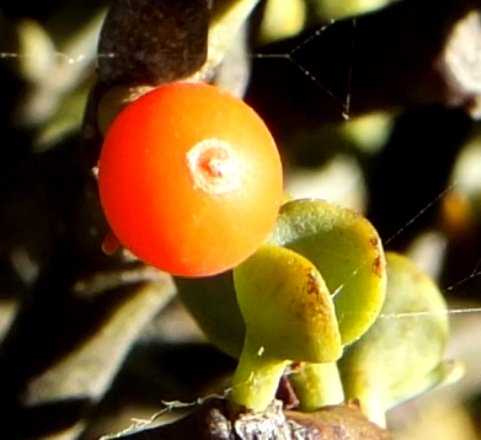Viscum rotundifolium up close

Author: Ivan Lätti
Photographer: Thabo Maphisa
The two opposite Viscum rotundifolium leaves seen here are fleshy, nearly round with faint, obtuse tips and rough, hairless surfaces. They angle outwards just slightly from the base where they are joined at the stem tip.
Mistletoe parasites generally have higher transpiration rates than their host trees, irrespective of which tree species those may be. The flow of water and nutrients is passively maintained from the host xylem, fluid transport tissue found in vascular plants.
Some translucence is displayed in the photo by both leaves and the brightly coloured fruit.
V. schaeferi with narrow leaves and yellow to orange ellipsoid berries and V. pauciflorum with obovate leaves tapering to the base and tiny white flowers are similar South African mistletoe species (Wikipedia; http://www.sciencedirect.com).

